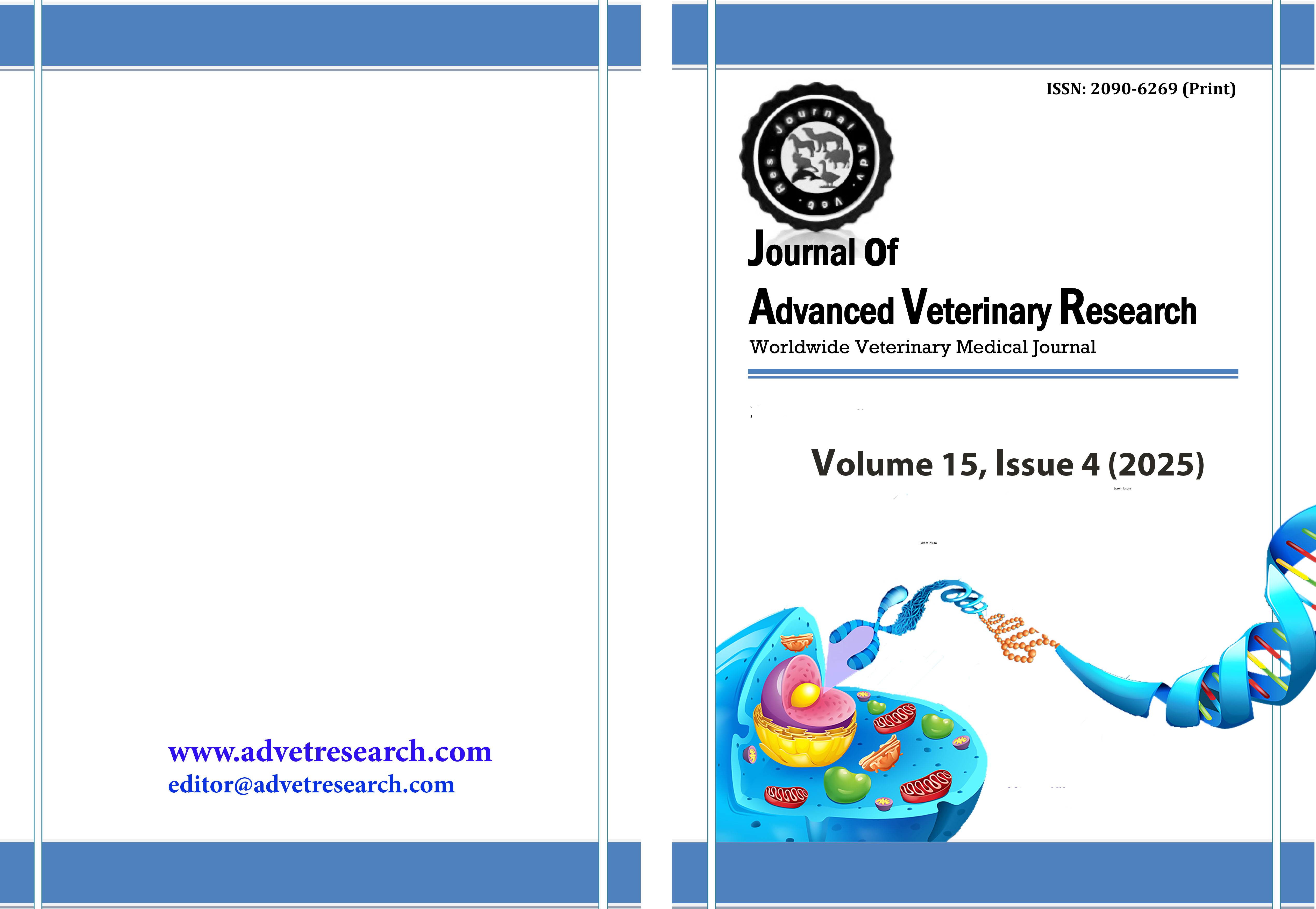Association of passive transfer failure of colostrum and serum immunoglobulins with risk factors in both natural and embryo transfer arabian foals
Keywords:
Natural foals, Embryo transfer foals, Risk factors, Immunoglobulins, Refractometer, Zinc sulphateAbstract
Thirty Arabian foals were included in this study, 15 produced by natural breeding and the others by the embryo transfer technique. This study was conducted during the first 24 hours of the foal's life, as the foal immunoglobulin (IgG) levels were measured using three different methods. The first method, the most reliable in this study, was the ELISA test (reference method). The other methods used for serum analysis were the refractometer and zinc sulfate test, while the colostrum immunoglobulins (IgG) of mares were measured only by refractometer. Furthermore, some statistical analyses were performed to assess the diagnostic test characteristics of the refractometer and zinc sulfate test, which were used to calculate the optimal cut-off values for estimating different passive immunity statuses in foals. The optimal cut-off values were selected based on sensitivity and specificity, as the best cut-off point contains the ideal combination of these factors. Additionally, the calculation of the area under the curve (AUC) for the refractometer and zinc sulfate tests provided information about the accuracy of the tests in differentiating foals with and without failure of passive transfer (FPT). This study aimed to estimate the risk factors associated with the failure of passive transfer. The results revealed that these factors are related to the dam, including age, parity, pregnancy type (whether broodmare or recipient), body weight, body condition scores, gestation period, mineral salt administration, and measurement of colostrum IgG by refractometer, as well as serum IgG by ELISA, zinc sulfate, and refractometer. On the other hand, factors related to foals included birth weight, number of navel disinfection, foaling time, gender, and measurement of IgG in serum by ELISA, zinc sulfate, and refractometer.
Downloads
Published
How to Cite
Issue
Section
License
Copyright (c) 2025 Journal of Advanced Veterinary Research

This work is licensed under a Creative Commons Attribution-NonCommercial-NoDerivatives 4.0 International License.
Users have the right to read, download, copy, distribute, print, search, or link to the full texts of articles under the following conditions: Creative Commons Attribution-NonCommercial-NoDerivatives 4.0 International (CC BY-NC-ND 4.0).
Attribution-NonCommercial-NoDerivs
CC BY-NC-ND
This work is licensed under a Creative Commons Attribution-NonCommercial-NoDerivatives 4.0 International (CC BY-NC-ND 4.0) license




